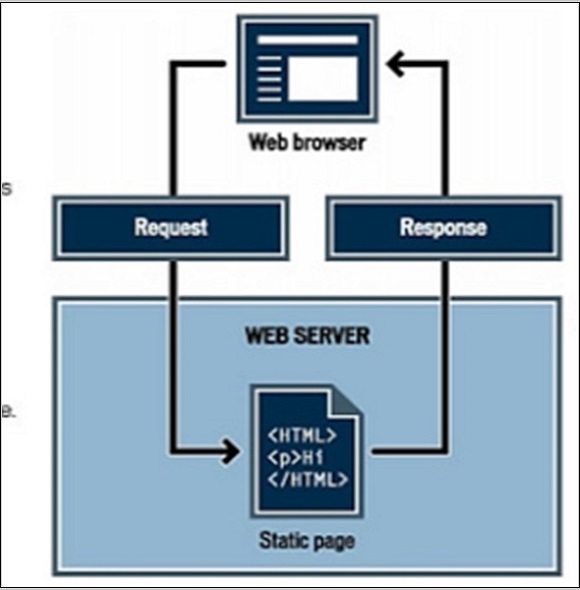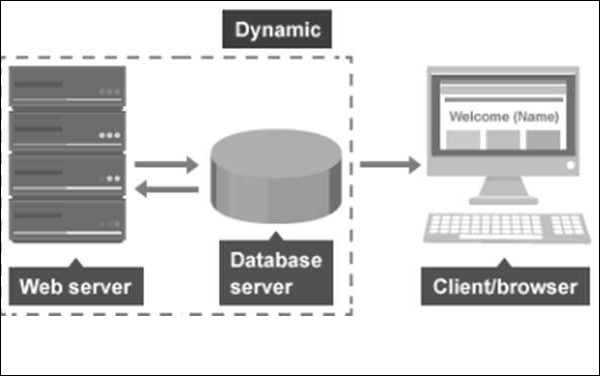A Static or Flat Webpage means a webpage in which all the information and material is presented in front of the users as it is stored in it. A Static Webpage shows the same information and data to all users. In internet technology, Hyper Text Markup Language (HTML) was the first language or channel by which people started to create static web pages.
HTML offers the style of text, paragraphs creation and line breaks. But the most important function and feature of HTML is link creation option. Static webpages are useful for their material and content, which rarely need to be revised or updated.
 The file structure of the static website with one page is as shown below.
The file structure of the static website with one page is as shown below.

All Content Management Systems (WordPress, Joomla and Drupal) that we mentioned before are dynamic websites.
The following illustration shows a schematic view of a dynamic webpage.

HTML offers the style of text, paragraphs creation and line breaks. But the most important function and feature of HTML is link creation option. Static webpages are useful for their material and content, which rarely need to be revised or updated.
Advantages of Static Websites
- Quick to develop
- Cheap to develop
- No need to have a big hosting plan
Disadvantages of static websites
- Requires web development expertise to update site
- Site not that useful for the user
- Content can get stagnant
 The file structure of the static website with one page is as shown below.
The file structure of the static website with one page is as shown below.
Dynamic Webpages
Dynamic Webpages is the latest trend at present because they can produce different content for different visitors from the same source code file. The website can display different content based on parameters like −- What operating system or browser the visitor is using.
- Whether the user is using a computer or a mobile device.
- The source location that referred the visitor.
- If the visitor has done a purchase before from an online shop, etc.
All Content Management Systems (WordPress, Joomla and Drupal) that we mentioned before are dynamic websites.
The following illustration shows a schematic view of a dynamic webpage.


No comments:
Post a Comment